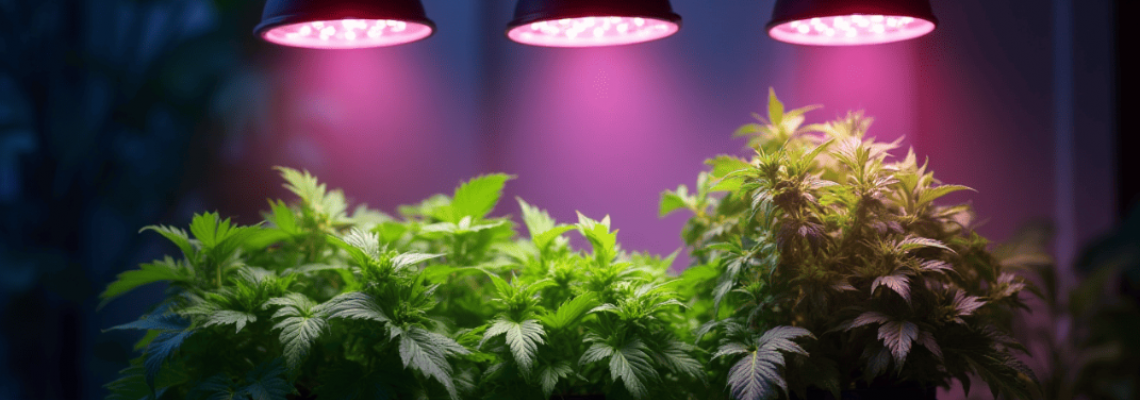
In today’s rapidly evolving agricultural landscape, lighting is no longer just about visibility it’s a critical component in optimizing plant growth, enhancing productivity, and ensuring sustainable operations. This is especially true in Controlled Environment Agriculture (CEA), where every variable, from temperature to humidity to light, is fine-tuned to maximize crop output. As urbanization, land scarcity, and unpredictable weather patterns push more growers toward indoor and greenhouse farming, selecting the right grow light system has become more important than ever.
The debate continues: Should you rely on the proven performance of High-Pressure Sodium (HPS) lights, opt for cost-effective fluorescent systems, or embrace cutting-edge LED technology? Each lighting type offers its own set of advantages and challenges, from energy efficiency and spectral output to heat management and long-term cost. The choice isn’t just about brightness it’s about aligning your lighting system with your specific crop requirements, budget, and sustainability goals.
In this blog, we’ll explore the strengths and limitations of HPS, fluorescent, and LED grow lights to help you make an informed, future-ready decision for your indoor farming setup. Whether you're an experienced commercial grower or just starting out, understanding these lighting options is key to cultivating success.
High-Pressure Sodium (HPS): Powerful but Outdated
HPS grow lights have long been favored in commercial agriculture, particularly for flowering crops. Their intense light output and deep canopy penetration allow plants to thrive during reproductive stages. Additionally, HPS systems often have lower upfront costs, making them appealing for growers just starting.
However, HPS lighting is energy-intensive and generates substantial heat, necessitating additional cooling systems and increasing overall energy consumption. Its fixed spectrum lacks flexibility, making it less suitable for full-cycle cultivation where different stages require varied light wavelengths. In 2025, with rising energy costs and sustainability mandates, the drawbacks of HPS systems are more pronounced.
Fluorescent Lights: Budget-Friendly but Limited
Fluorescent grow lights, including T5 and CFLs, are a staple for beginners and small-scale growers. Their cooler operating temperatures and soft light make them ideal for seedling propagation and vegetative growth. Fluorescents are relatively inexpensive and easy to install, especially in compact spaces.
Still, they fall short of serious crop production. Their light intensity is insufficient for flowering or fruiting, and their spectrum isn’t adjustable. Moreover, fluorescent bulbs have a shorter lifespan compared to LED alternatives and often contain trace amounts of mercury, posing an environmental risk during disposal. For growers seeking scalability and full-cycle solutions, fluorescents are quickly being replaced by more efficient alternatives.
LED Grow Lights: The Smart Future of Farming
LED (Light Emitting Diode) grow lights are rapidly transforming modern farming. What started as a niche solution has become the gold standard in controlled agriculture. LEDs offer unparalleled energy efficiency, using up to 70% less electricity than HPS systems while emitting minimal radiant heat. This drastically reduces HVAC costs and allows lights to be placed closer to plants without causing damage.
Perhaps the most powerful feature of LED technology is spectrum customization. Different crops and growth stages require unique light wavelengths, and LED systems can be tailored to deliver just that. Many advanced systems allow real-time spectrum adjustments via mobile apps or integrate with smart farming platforms for AI-based optimization.
Another major advantage is longevity. High-quality LED fixtures can last over 50,000 hours, resulting in reduced maintenance and replacement costs. They are also eco-friendly, containing no toxic materials, and often qualify for energy rebates and sustainability incentives.
Performance Comparison: Yield, Quality, and Cost
When it comes to yield and quality, LEDs outperform traditional systems across the board. The ability to fine-tune light conditions enables plants to receive optimal stimulation at every growth stage, resulting in healthier crops, shorter growth cycles, and higher yields. HPS may still offer strong flowering support, but its inefficiency and high heat output limit its practicality in modern facilities. Fluorescents, while useful for early growth, simply can’t support high-density or high-yield operations.
While LEDs have a higher initial cost, their operational savings and crop improvements offer strong ROI. Many commercial growers recover their investment in under two years due to reduced energy bills, longer fixture life, and enhanced crop turnover.
Environmental and Regulatory Considerations
Sustainability is no longer a buzzword; it's a requirement. Governments and industry bodies are enforcing stricter energy and emissions regulations, and lighting plays a major role. HPS systems, with their high energy use and heat output, contribute significantly to a farm's carbon footprint. Fluorescents, while lower in energy use, pose challenges due to their mercury content.
LEDs, on the other hand, offer the most sustainable option. Their energy efficiency, long lifespan, and recyclable design align well with green certifications and eco-conscious consumer trends. Many regions even offer tax credits or rebates for switching to energy-efficient lighting, making LEDs an even more attractive choice.
Smart Farming and Future Scalability
One area where LEDs truly shine is in integration with smart farming technologies. LED systems can be embedded with sensors, connected to cloud platforms, and programmed for automated adjustments based on plant needs and environmental data. This level of control not only improves crop outcomes but also saves labor and reduces human error.
As farming moves toward vertical stacking, modular design, and data-driven decision-making, LEDs support the scalability and flexibility that tomorrow’s operations demand. Whether you’re outfitting a single grow room or an entire warehouse, LED systems offer the adaptability needed to future-proof your farm.
Conclusion: Lighting the Path Forward
The grow light debate may have once been dominated by budget constraints and familiarity with older systems, but the landscape has shifted. In 2025, energy efficiency, spectrum precision, and long-term sustainability are the new priorities. While HPS and fluorescent lights still serve limited roles in agriculture, the advantages of LED grow lights make them the clear choice for modern, high-performing, and environmentally responsible farming.
If you’re planning a new grow setup or upgrading an existing one, choosing LED lighting isn’t just a smart move it’s the future. In the battle of Watt’s Better, LEDs don’t just win they redefine the game.

Leave a Comment